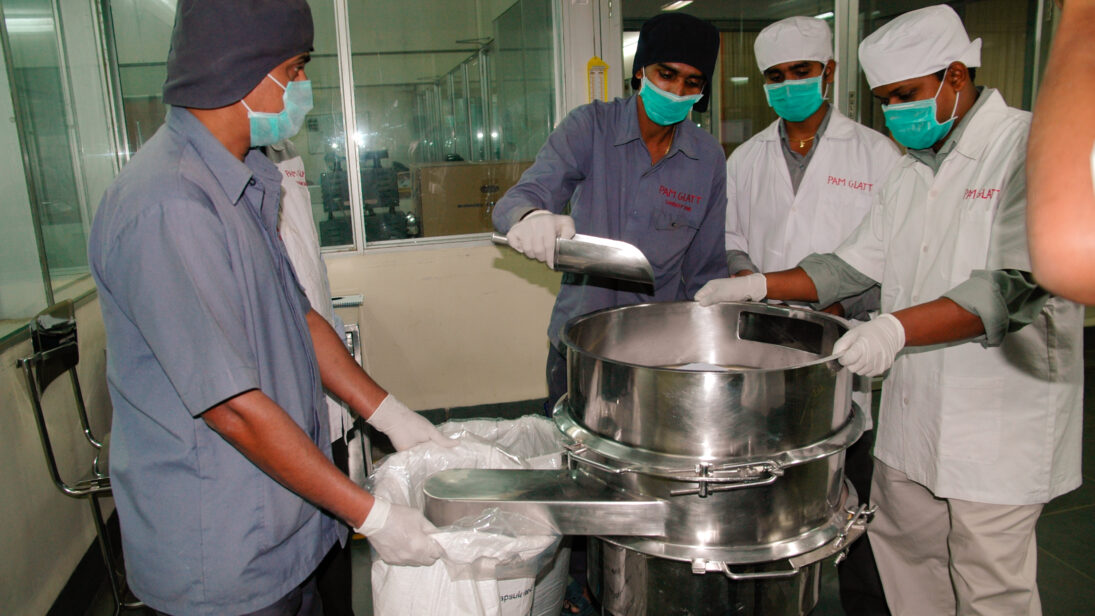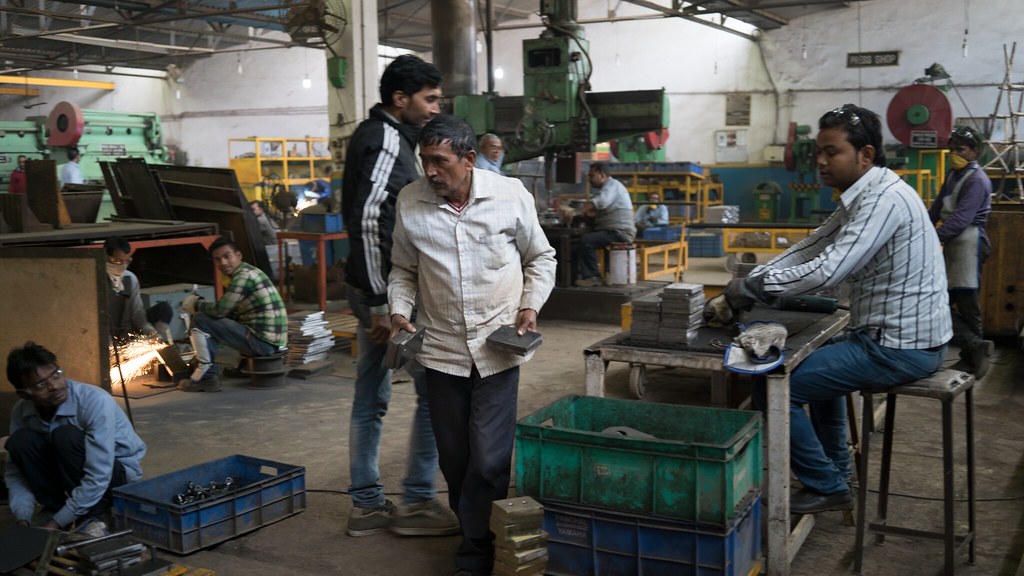
Since coming to power in 2014, one of Prime Minister Narendra Modi’s objectives has been for manufacturing to account for 25 percent of India’s GDP by 2025. Throughout Modi’s first term in office, the “Make in India” campaign was the top priority for the government, and government officials traversed the globe making the pitch to investors about why India was open for business. Furthermore, the government focused on liberalizing various sectors for foreign investment. Yet, despite the fanfare surrounding the Make in India campaign, there are legitimate questions about its overall success. Between FY 2015-16 (the first full fiscal year after the Make in India campaign launched) and FY 2020-21, foreign direct investment (FDI) increased by 24 percent, from USD $39.3 billion to USD $48.6 billion. However, while FDI increased, growth in the manufacturing sector remained stagnant at about 17 percent of GDP. Furthermore, growth in FDI was not because of greenfield projects but was driven by investments into Reliance Jio.
While the government pursued the Make in India campaign, it also began to turn away from trade agreements, opting instead to increase tariffs. Increasing tariffs has served multiple purposes: first, they aimed to reduce India’s trade deficit with China (USD $69.4 billion in 2021), which the government viewed as unsustainable. The government also viewed tariffs as a mechanism to bolster domestic manufacturing. However, higher tariffs have increased input costs for Indian manufacturers, making Indian products more expensive as the government promoted import substitution to boost manufacturing rather than focusing on export promotion. Without a coherent trade policy to accompany the push towards the Make in India campaign, India’s manufacturing sector has not grown substantially and has been hemorrhaging jobs: in 2016-17, 51 million Indians were employed in the manufacturing sector, but in 2020-21 only 27.3 million Indians were employed by manufacturers (though part of this decline is due to the COVID-19 pandemic).
…The (Indian) government has shifted its approach to how it intends to attract manufacturing jobs: it has developed production-linked incentive (PLI) schemes while also beginning to embrace free trade.
Due to the COVID-19 pandemic and ahead of the 2024 general elections, the government needs to focus its efforts on job creation, especially since India’s economy is still recovering from the shock of the initial lockdown from April-June 2020 (India’s economy contracted by 23.9 percent that quarter). This is why the government has shifted its approach to how it intends to attract manufacturing jobs: it has developed production-linked incentive (PLI) schemes while also beginning to embrace free trade.
Pandemic prompts a rethink
Since the COVID-19 pandemic, the phrase “Make in India” has seemingly disappeared from the bureaucratic lexicon. The Make in India campaign aimed to attract manufacturers by removing regulations and liberalizing foreign direct investment. So far, this has not come to fruition, forcing the government to rethink its strategy so that India can achieve “atmanirbhar bharat,” or self-reliance. The government also realizes that due to the COVID-19 pandemic, this is an opportunity to be a part of the “China plus One” strategy and attract new manufacturing jobs.
To achieve atmanirbhar bharat, the government has shifted towards a new strategy: developing production-linked incentive (PLI) schemes, which provide financial incentives for companies that meet various manufacturing targets. First launched in March 2020, the government now has PLI schemes for fourteen different sectors where India can have a competitive advantage. By attracting domestic manufacturers and aiming to create up to six million jobs over the next five years, PLI schemes seem to be the government’s next hope of realizing atmanirbhar bharat.

One area of India’s economy that PLI schemes can impact is solar power. Though Prime Minister Modi is a champion of increasing solar power in India, India’s solar revolution has been powered by Chinese imports. As current Sino-India tensions show no sign of abating, the government believes that this is an opportune time to bolster India’s capabilities, create new jobs in India, and also reduce India’s reliance on China. Furthermore, as the world looks for alternatives to China, the PLI scheme can position India to gain some of China’s solar panel market share. This strategy will be implemented in the other sectors chosen, including electronics—the largest source of India’s trade deficit with China—and active pharmaceutical ingredients (APIs), of which 80 percent are sourced from Wuhan.
There are signals that the PLI scheme is working. Companies such as Apple and Samsung are taking advantage of the scheme, while Ford, which initially announced it was pulling out of the Indian market, seems to be rethinking its exit from India to take advantage of the newly announced PLI scheme for electric vehicles. However, while incentives are offered under the PLI scheme, they are offset by high tariffs on various input products, which can negate the benefits companies receive under the PLI scheme.
Trade agreements under negotiations
The focus on the PLI schemes has also convinced the government to restart trade negotiations to create opportunities for Indian exports. Currently, the government has completed a deal with the UAE, while deals with Australia the UK are likely this year. India is also looking to begin negotiations with Israel, while talks with Canada and the EU (which have effectively been paused for several years), could restart this year.
The government’s rhetoric and actions around trade are a welcome change after years of being adverse to the idea of free trade. India’s changing views towards bilateral trade agreements are driven in part by the need to focus on export-oriented growth and strategic interests. India’s relationship with Australia was the weakest within the Quad—the emerging security bloc including the United States, India, Australia, and Japan—and a potential trade deal will bring these two countries closer together. Similarly, the UAE has increased investments in India, which will be a starting point for India to pursue other deals in the Middle East and speaks to Modi’s strategic priority of engaging with the Gulf countries.
There is a strong political commitment behind the PLI scheme, and that, combined with a comprehensive trade strategy, can set India on the pathway to achieving its twin objectives of increasing manufacturing and exports.
India’s new approach to trade will benefit it in the long run as it will lower tariffs in other markets and allow India’s exports to continue to grow. This will be what makes the PLI scheme successful and allows India to achieve the manufacturing growth it has desired: a comprehensive trade strategy combined with a stable regulatory regime will allow India to achieve atmanirbhar bharat.
Conclusions and Recommendations
For the PLI schemes to meet India’s ambition of increasing exports, the government must formulate a comprehensive trade strategy. India should look beyond limiting itself to “early harvest deals” and engage in more comprehensive negotiations that cover a wider range of sectors, rather than repeatedly raising tariffs to protect domestic industry. At the same time, the PLI schemes can only be successful if the central government works in concert with state governments. While the central government can provide the financial incentives, state governments need to be key partners in developing the infrastructure and logistics that allow companies to succeed.
Despite previous missteps, the government has learned from its mistakes and recognizes that this is a generational opportunity to attract new manufacturing investments. There is a strong political commitment behind the PLI scheme, and that, combined with a comprehensive trade strategy, can set India on the pathway to achieving its twin objectives of increasing manufacturing and exports.
***
Image 1: International Labor Organization Asia-Pacific via Flickr
Image 2: International Labor Organization Asia-Pacific via Flickr